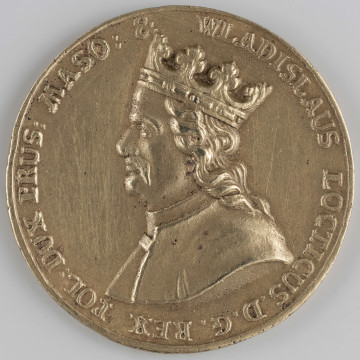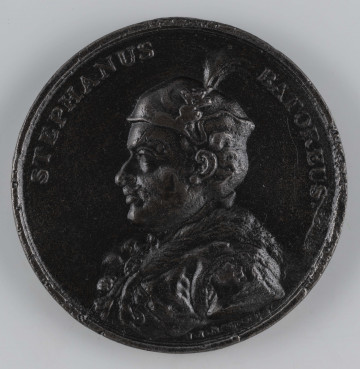
Władysław Łokietek - Kajetan Sołtyk's entourage
1790 — 1810
National Museum in Lublin
Part of the collection: Polish medallic art from the 16th to the 17th c.
The Polish art of medal-making flourished during the reign of Sigismund III Vasa. It was fostered by the ruler's keen interest which manifested itself in the king's own works. Medals made by the king himself are evidenced in sources, although unfortunately not preserved to our times. However, Sigismund III more often commissioned other artists to make medals commemorating important events of his reign. Among the medallists active in the Commonwealth of Poland, the most outstanding figure was undoubtedly Samuel Ammon, who worked in Gdańsk. Representations of Sigismund III Vasa were also made outside Poland and not always commissioned by the Polish royal court. One of the most interesting examples is a medal by the Swedish court medallist Arvid Jonasson von Karlsteen. Initially, he learned the art of medal-making in his native Sweden, but he also studied in Germany and later in London. In 1674 he was employed in the Swedish royal mint, but he was not very well paid. In 1677 he was very close to becoming a medallist to King John III Sobieski. Such a proposal came from Poland, and Karlsteen even resigned from his post in the Swedish mint, but King Charles XI did not agree to the artist's departure. Soon afterwards Karlsteen's situation improved, and for over two decades he became the main medallists of the Swedish court.
The medal depicting Sigismund III Vasa belongs to a series devoted to Swedish rulers. It was made in the early years of the 18th century, possibly in 1703. The obverse and reverse, together with the inscriptions in the rim, are a clear summary of the history of this ruler, although seen from the Swedish perspective. The obverse depict the king in armour, but without a crown on his head. Nevertheless, the inscription on the rim says that he is Sigismund, King of Sweden by God's grace (SIGISMVND[US] D[EI] G[RATIA] REX SVECIAE). On the reverse, in the central field, there is a cartouche with the coats of arms of Poland and Lithuania, while on the rim the author placed an inscription: HOC TECTVS NVDATVR AVITO, which loosely translated means that although the ruler donned the coats of arms of foreign countries, he was deprived of ruling in his homeland.
Leszek Poniewozik
Author / creator
Dimensions
cały obiekt: width: 51,9 mm
Object type
medal
Technique
stamp minting
Material
silver
Creation time / dating
Creation / finding place
Owner
The National Museum in Lublin
Identification number
Location / status

1790 — 1810
National Museum in Lublin

1792 — 1797
National Museum in Lublin

1792 — 1797
National Museum in Lublin
DISCOVER this TOPIC
Museum of King Jan III's Palace at Wilanów
DISCOVER this PATH
Educational path